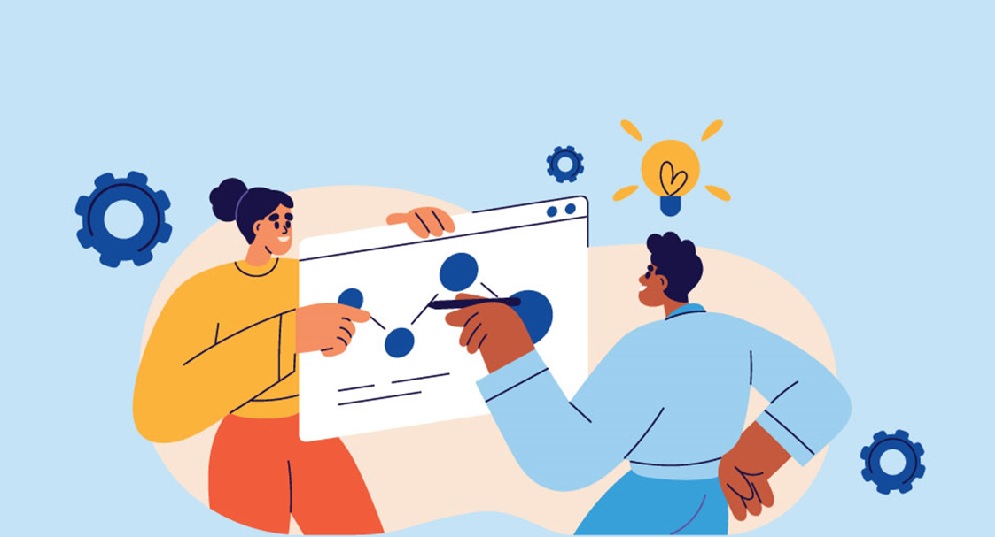
Innovations in Employee Training & Development: 2023 Guide

Employee training refers to the process of imparting specific skills, knowledge, and competencies to an organization's workforce to enhance their performance and productivity. It is essential because it equips employees with the tools and expertise they need to excel in their roles, adapt to changing technologies and industry trends, and contribute effectively to the company's goals. Effective training fosters employee engagement, boosts morale, and promotes a culture of continuous learning, which ultimately leads to improved job satisfaction, reduced turnover, and a more skilled, adaptable and mindfull workforce. In today's dynamic business landscape, ongoing employee training is vital for an organization's growth and competitiveness.
In today's changing business world, employee training and development are crucial. The usual approach of one-size-fits-all training is no longer enough. Newer methods of employee training and development have transformed the business landscape. Organizations need to stay competitive and cultivate a culture of growth.
Innovations in training enable companies to tailor learning experiences to individual needs, fostering a more skilled and adaptable workforce. By embracing these innovations, businesses can keep pace with evolving technologies and market demands, resulting in increased employee engagement, reduced turnover, and ultimately, a more competitive edge in the dynamic global marketplace which promotes the mental health care and support to their employees.
Let’s discuss the newer methods of training -
- Microlearning: Short and Sweet
- Mobile Learning: Learning on the Go
- Gamification: Making Learning Fun
- Virtual Reality (VR) and Augmented Reality (AR): Immersive Learning
- Data Analytics: Learning Insights
- Peer Learning and Social Collaboration
- Blended Learning: Combining the Best of Both Worlds
- Just-In-Time (JIT) Learning: Learning When You Need It
- Soft Skills Training: Nurturing Interpersonal Skills
- Remote and Hybrid Work Training
- Continuous Learning Culture
- Assessment and Certification
- Accessibility and Inclusivity
In corporate training, online and digital learning is a game-changer. Microlearning has replaced long classroom-based sessions. It offers small, easy-to-digest lessons online. Microlearning makes learning more accessible and engaging. This allows employees to use information when they need it. Be it a short video or a quick quiz, microlearning lets employees learn with ease.
With the availability of smartphones and tablets, mobile learning is reforming corporate training. It allows employees to use training materials and resources anytime, anywhere. Mobile learning integrates training into employees' lives, creating a culture of continuous learning with proper peace of mind.
Gamification is training that includes game elements such as points, badges, and leaderboards. This boosts engagement and also motivates employees to complete training modules and excel. Gamification taps into the human desire for achievement and recognition. This makes learning enjoyable and rewarding.
VR and AR offer immersive training experiences. Engaging all the senses in learning improves understanding. Creating virtual worlds benefits employees' training and development. This is particularly valuable in fields like healthcare, manufacturing, and aviation. VR and AR provide a level of lifelike engagement that goes beyond the usual.
Mental Health Survey 2023 - Read the comprehensive report here.
Data analytics is changing the corporate training environment. Learning analytics involves using data on employee training performance. This data enables organizations to identify strengths, weaknesses, and areas for improvement. Tailoring training programs in real-time helps to match business goals and employee needs.
Collaboration and knowledge sharing are vital in today's interconnected world. Social learning platforms encourage knowledge sharing, discussion, and learning within teams. Formal mentorship programs enable learning, creating a sense of community and support.
Blended learning combines online and in-person training to create a complete and thorough learning experience. It increases the benefits of employee training through digital and traditional methods. This allows employees to take the training at their convenience and practice it as well. Hence, it reduces the risk of burn out stress for employees.
In the ever-changing corporate world, information loses relevance. JIT learning means that one can access resources and information on demand. This may include a video tutorial or a quick reference guide. JIT learning increases productivity and allows independent problem-solving for the employees.
Beyond technical skills, soft skills are gaining recognition in the workplace. Emotional intelligence (EI) training focuses on improving the ability to get along with others, empathy, and self-awareness. These programs help employees thrive in collaborative and inclusive work environments.
The COVID-19 pandemic speeded up the use of remote and hybrid work models. Training programs now support employees working from various locations. The best training and development program for employees now covers a range of topics. Starting from time management, virtual communication, and cybersecurity awareness. These trainings address new vulnerabilities introduced by remote work.
Manage Your Mental Health Better - Download The Mpower App
To succeed today, organizations promote a culture of continuous learning. As a result, employees view learning as a lifelong journey. Organizations offer access to various courses and resources for ongoing skill development. In such a culture, employees take charge of their learning, which helps in their personal and professional growth.
Digital badges and certificates showcase employees' skills and achievements. Employees Employees can share these on professional networks like LinkedIn. This enhances employees' profiles and demonstrates their dedication to continuous learning and growth. Along with this, these type of gestures are examples of appreciation and gratitude towards the employees for their dedication and hard work.
Inclusivity is vital in modern corporate training. Training needs to satisfy all the access needs of people with various disabilities. Only if everyone can access the training, then they can grow. Creating an inclusive learning environment benefits the training and development needs of all employees.
Conclusion
Innovations in employee training and development are essential in today's dynamic corporate environment. The innovations discussed here, are reshaping talent development. By embracing these innovations, corporations can adapt to change, and stay competitive. Empowered employees can achieve new levels of success. Commitment to innovations paves the way for a brighter future for both employees and organizations.
image credit : freepik

Mpowering Minds 2026 – Women’s Mental Health Summit: Championing a New Era of Well-Being
Therapy Approaches That Help Heal Intergenerational Trauma: CBT, DBT, Somatic Work & More

